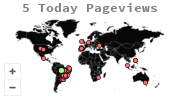Typologies of Academic Entrepreneurs and Limits and Possibilities of Integration with Companies and the State
DOI:
https://doi.org/10.23925/2178-0080.2021v23i2.50713Keywords:
Academic Entrepreneurship, Triple Helix Approach, New Legal Landmark of ST&IAbstract
This paper aims to explore alternative perspectives on academic entrepreneurship typologies. This study consists of qualitative research of exploratory character-oriented phenomenology and hermeneutics and applies the snowball sampling technique for recruiting the interviewees. The subjects of this research consisted of 15 scholars from two public universities in Rio de Janeiro. They somehow perform or have tried to perform academic entrepreneurship activities and/or self-identify as entrepreneurs, according to their cognitive representations of the phenomenon. We opted for carrying out in-depth conversational semistructured interviews as a data collection technique. The conclusions of this research provide some clues regarding the plural ways in the process of production, diffusion, and commercialization of knowledge.
References
Aldridge, T. T., & Audretsch, D. (2017). The Bayh-Dole act and scientist entrepreneurship. In Universities and the Entrepreneurial Ecosystem. Edward Elgar Publishing.
Biernacki, P., & Waldorf, D. (1981). Snowball sampling: Problems and techniques of chain referral sampling. Sociological Methods & Research, 10(2), 141-163.
Burrell, G., & Morgan, G. (1979). Paradigmas sociológicos e análise organizacional.. Londres: Heinmann.
Lei nº 13.243, de 11 de janeiro de 2016. Dispõe sobre estímulos ao desenvolvimento científico, à pesquisa, à capacitação científica e tecnológica e à inovação. Recuperado de http://www.planalto.gov.br/ccivil_03/_ato2015-2018/2016/lei/l13243.htm
Decreto nº 9283, de 7 de fevereiro de 2018. Regulamenta a Lei nº 10.973, de 2 de dezembro de 2004. Recuperado de http://www.planalto.gov.br/ccivil_03/_Ato2015-2018/2018/Decreto/ D9283.htm
Bulfinch, T. (2001) O Livro de Ouro da Mitologia:(a idade da fábula) Histórias de Deuses e Heróis. Tradução de David Jardim Júnior. Rio de Janeiro: Ediouro.
Cervantes, Miguel de. (2007). Dom Quixote de La Mancha. Trad. Viscondes de C. A. São Paulo: Martin Claret. 2 partes
Creswell, J. W. (2014). Investigação Qualitativa e Projeto de Pesquisa-: Escolhendo entre Cinco Abordagens. Penso Editora.
Dudziak, E. A. (2007). Lei de inovação e pesquisa acadêmica: o caso PEA. (Tese de doutorado), Universidade de São Paulo, São Paulo, SP, Brasil.
Etzkowitz, H. E. (2009). Hélice tríplice: universidade-indústria-governo inovação em ação. Edipucrs.
Fontanella, B. J. B., Luchesi, B. M., Saidel, M. G. B., Ricas, J., Turato, E. R., & Melo, D. G. (2011). Amostragem em pesquisas qualitativas: proposta de procedimentos para constatar saturação teórica. Cadernos de Saúde Pública, 27, 388-394.
Hayter, C. S., Nelson, A. J., Zayed, S., & O’Connor, A. C. (2018). Conceptualizing academic entrepreneurship ecosystems: A review, analysis and extension of the literature. The Journal of Technology Transfer, 43(4), 1039-1082.
Kruglianskas, I., & Matias-Pereira, J. (2005). Um enfoque sobre a Lei de Inovação Tecnológica do Brasil. Revista de Administração Pública, 39(5), 1011-1029.
Lam, A. (2010). From ‘ivory tower traditionalists’ to ‘entrepreneurial scientists’? Academic scientists in fuzzy university—industry boundaries. Social Studies of Science, 40(2), 307-340.
Manzini, E. J. (2003). Considerações sobre a elaboração de roteiro para entrevista semiestruturada. Colóquios sobre Pesquisa em Educação Especial. Londrina: Eduel.
Ministério da Ciência, Tecnologia, Inovações e Comunicações - MCTIC. (2016). Estratégia Nacional de Ciência, Tecnologia e Inovação - ENCTI 2016- 2022. Brasília, DF. Recuperado de http://www.mctic.gov.br/mctic/export/sites/institucional/ciencia/SEPED/Arquivos /PlanosDeAcao/PACTI_Sumario_executivo_Web.pdf
Moustakas, C. (1994). Phenomenological research methods. Sage.
Moreira, D. A. (2002). Método fenomenológico na pesquisa. Cengage Learning Editores.
Schumpeter, J. A. (2017). Capitalismo, socialismo e democracia. SciELO-Editora UNESP. (Obra original publicada em 1942)
Sharif, N. (2006). Emergence and development of the National Innovation Systems concept. Research Policy, 35(5), 745-766.
Shinn, T., & Lamy, E. (2006). Paths of commercial knowledge: Forms and consequences of university–enterprise synergy in scientist-sponsored firms. Research Policy, 35(10), 1465-1476.
Slaughter, S., & Leslie, L. L. (1997). Academic capitalism: Politics, policies, and the entrepreneurial university. The Johns Hopkins University Press, 2715 North Charles Street, Baltimore, MD 21218-4319.
Lewin, C., & Somekh, B. (2017). Teoria e métodos de pesquisa social. Editora Vozes Limitada.
Van Manen, M. (2016). Researching lived experience: Human science for an action sensitive pedagogy. Routledge.
Vinuto, J. (2016). A amostragem em bola de neve na pesquisa qualitativa: um debate em aberto. Temáticas, (44).
Downloads
Published
How to Cite
Issue
Section
License
Authors who publish in this journal agree to the following terms:
1. Authors retain the copyright and grant the journal the right of first publication, with the work licensed simultaneously under a Creative Commons Attribution License after publication, allowing the sharing of work with acknowledgment of the authorship of the work and initial publication in this journal.
2. Authors are authorized to take additional contracts separately, for non-exclusive distribution of the version of the work published in this journal (eg publish in institutional repository or as a book chapter), with acknowledgment of authorship and initial publication in this journal.
3. Authors are allowed and encouraged to publish and distribute their work online (eg in institutional repositories or on their personal page) at any point before or during the editorial process, as this can generate productive changes, as well as increase the and the citation of the published work (See The Effect of Free Access).







